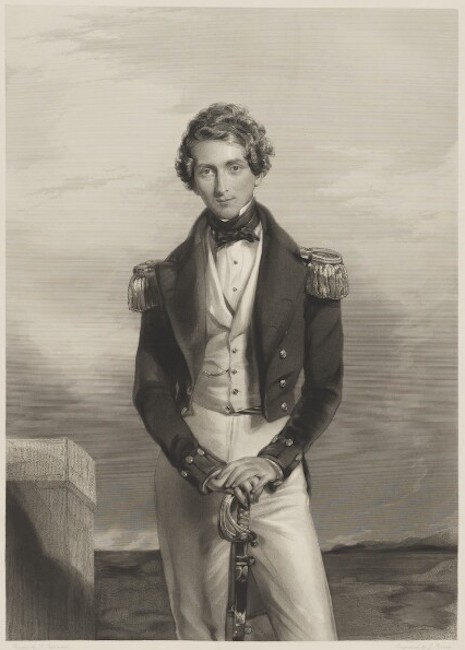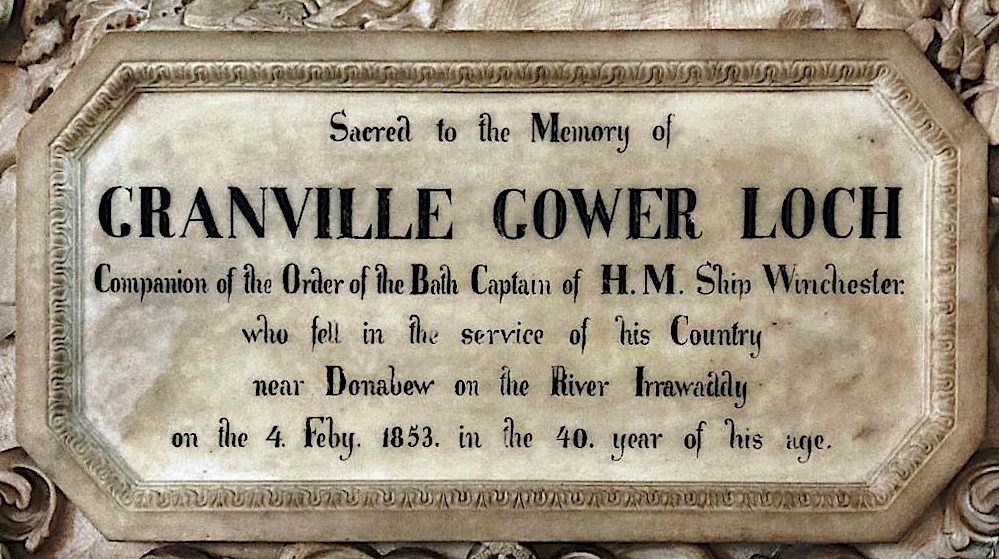
Monument to Granville Gower Loch (1813-1853). Baron Carlo Marochetti (1805-1867). A marble relief in a recess of the south aisle of the nave, St Paul's Cathedral, London. Photographs of the monument by Tim Willasey-Wilsey. Text and formatting by Jacqueline Banerjee.
Born into a high-achieving Scottish family, Loch was a very successful naval officer who rose to the rank of commander in 1837, and served in many different areas of conflict. He also took a keen interest in the places and people he encountered in the countries he visited. After his expedition to China, for example, he published his journal, The Closing Events of the Campaign in China, with John Murray in 1843 (reissued in the Cambridge Library Collection, 2013). He was appointed C.B. in 1848 after taking over a fort on the coast of Nicaragua, and securing a treaty. However, he and hs men were set upon during a joint naval and military expedition against a "robber chief," at the end of the Second Burmese War (Laughton). Aged only 40, he died near Donabew on the River Irrawaddy, and was buried in Rangoon.


Left: Loch, by Joseph Brown, after George Richmond; a stipple engraving, after 1853. National Portrait Gallery (NPG D37392), by kind permission. Right: Closer view of the inscription panel on the relief.
Marochetti's memorial for Loch "sums up these imperial wars.... Surrounded by tropical forest, Loch leads an attack against the half-naked Burmese (Tomlinson 85). The still youthful hero stands astride the melee but has of course left himself all too vulnerable to attack.
Links to related material
Bibliography
Laughton, J. K. "Loch, Granville Gower (1813–1853)." Oxford Dictionary of National Biography. Online ed. Web. 11 January 2023.
Tomlinson, Barbara. Commemorating the Seafarer: Monuments, Memorials and Memory. Woodbridge, Suffolk: Boydell Press, 2015.
Last modified 16 October 2023